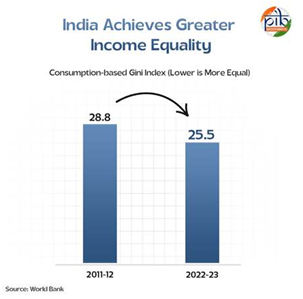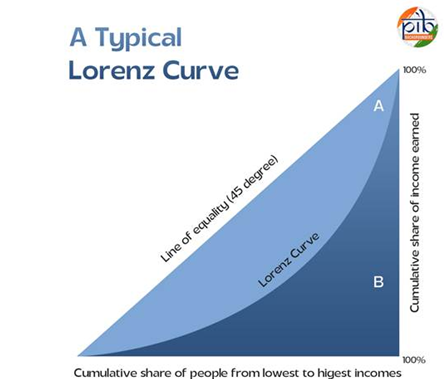

14th July 2025 (11 Topics)
Mains Issues
Context:
External Affairs Minister (EAM) S. Jaishankar is visiting China for the first time since the 2020 military standoff in Ladakh. Just ahead of his visit, China raised objections over Tibet-related issues, especially the Dalai Lama’s recent statement on his reincarnation, calling it a "thorn" in India-China ties.
Background
- The 14th Dalai Lama, currently living in exile in Dharamshala, India, stated that only a trust set up by him would decide the process of identifying his reincarnation.
- China strongly opposed this move, stating:
- The Dalai Lama’s reincarnation is an internal affair of China, and cannot be decided by any foreign entity.
- Any interference from other countries, including India, would be considered politically provocative.
- China reiterated that the Chinese Communist Party (CCP) will regulate any such religious succession processes.
Why is China so sensitive about the Dalai Lama and Tibet?
- Tibet is an autonomous region in southwestern China (referred to as “Xizang” by China).
- In 1959, the 14th Dalai Lama fled Tibet after a failed uprising against Chinese rule, and has since lived in exile in India.
- China sees the Tibetan spiritual movement as a threat to its territorial sovereignty.
- The issue of the Dalai Lama’s succession is critical to China because:
- It wants to control the selection process to install a pro-China spiritual figure.
- Any claim by the Dalai Lama’s followers outside China would challenge Beijing’s authority over Tibet.
India’s Position
- India has historically hosted the Dalai Lama, but maintains a diplomatic silence on Tibetan political matters to avoid escalating tensions.
- The Ministry of External Affairs clarified on July 4 that:
- The government does not involve itself in religious matters or beliefs.
- It did not endorse or comment on the reincarnation issue officially.
Broader Significance
This controversy comes at a sensitive time:
- Jaishankar's visit to China (July 14–15, 2025) is part of a Shanghai Cooperation Organisation (SCO) meeting, but also a bilateral opportunity to continue talks on:
- Normalising relations post-Galwan clashes (2020)
- Resolving the Ladakh border standoff
- Despite disengagement agreements in some areas (like Galwan and Pangong Tso), India-China military tensions remain unresolved in other friction points (like Depsang).
- The Tibet issue now adds a fresh layer of political tension, potentially disrupting the diplomatic thaw.


Mains Issues
Context:
Ahead of the 2025 Bihar Assembly Elections, the Election Commission (EC) launched a Special Intensive Revision (SIR) of the electoral rolls. This decision sparked legal and political concerns, especially as voters now need to re-verify their citizenship — even if they are already on the rolls.
What makes this drive controversial or different?
This 2024–25 revision is unlike earlier revisions in two key ways:
- Burden of Proof on Existing Voters:For the first time, voters who were already on the rolls after 2003 now have to prove their Indian citizenship again with official documents.This reverses the usual presumption that an enrolled voter is already verified.
- No Automatic Sanctity of Existing Rolls:Earlier roll revisions respected the sanctity of the existing rolls (i.e., voters already included were presumed eligible).Now, EC's new approach questions past inclusions, especially for those added after 2003 in Bihar.
- Marginalised groups like minorities, Extremely Backward Classes (EBCs), and migrant populations are at higher risk of exclusion due to:
- Lack of legacy documents
- Low literacy and awareness
- Bureaucratic barriers in remote areas
Why is EC doing this? (ECI’s Explanation)
- The EC says rapid urbanisation and migration have created:
- Duplicate entries (voters registered in multiple places)
- Ghost voters (deceased or moved away)
- Cited past complaints by political parties (e.g., Congress and BJP) of electoral fraud or inaccuracies.
- Hence, a nationwide clean-up is needed to ensure accurate and legitimate electoral rolls.
Supreme Court’s Viewpoint
- The Court allowed the revision to continue but raised important concerns:
- Could this exercise disenfranchise legitimate voters close to the election?
- Should it be delinked from the electoral timeline to avoid politicisation?
- Suggested inclusion of widely available documents like Aadhaar and Voter ID for verification.


Mains Issues
Context:
India is negotiating with the U.S. to avoid getting hit by new, high tariffs being imposed across Asia as part of Donald Trump’s aggressive trade reset. Several Asian nations like Vietnam, Myanmar, Laos, and Philippines have already been impacted, with tariffs going up to 40%.
India has managed to get a 90-day exemption, but this will expire on August 1, 2025. Without a deal, Indian exporters will be subject to similar high duties.
What are the major sticking points?
- Genetically Modified (GM) Crops: U.S. wants India to open its market to GM agricultural imports. India has firmly opposed, citing:
-
- Risks to native seed biodiversity
- Opposition from farmers' groups and Parliament
- Potential loss of exports to GM-free nations
- Dairy Imports: Indian religious sensitivities are at play. U.S. cattle often fed animal byproducts, which goes against Indian cultural norms. India sees this as a non-negotiable red line.
- Pharmaceutical Regulations: U.S. pharmaceutical firms are unhappy with India’s pricing caps and patent regulations. India defends this as essential for affordable healthcare and public welfare.
- Agriculture and Non-Tariff Barriers: U.S. wants India to relax sanitary and phytosanitary rules that it says block U.S. exports unfairly. India insists these are necessary for consumer safety and domestic producer protection.
- BRICS:BRICS membership (with China, Russia, Brazil, South Africa) may trigger additional tariffs. The U.S. sees BRICS as a challenge to its financial dominance. India, meanwhile, is balancing strategic autonomy while preserving its ties with the West.
Why is this interim deal important?
- Avoids Immediate Tariff Shock: The S. under Trump has begun slapping steep tariffs on most trading partners. India, unlike others, may not receive any formal tariff hike notice this week, showing it has some breathing room due to active negotiations.
- Gives Time for a Broader Agreement: This interim deal is not final—it will act as a stop-gap arrangement, allowing time to settle larger unresolved issues before a comprehensive trade deal later this year.
- Boosts Bilateral Trust: Trump recently told the media that a deal with India is “closer”, signaling political will. If successful, India would join a small club of countries (like the UK) that have made bilateral trade arrangements with the Trump administration.
- Tariffs on Indian Exports: India has a USD 40 billion trade surplus with the U.S., making it a top target.
|
Fact Box: India-US Trade
|


Mains Issues
Context:
A World Bank report (2025) claims that inequality in India has reduced, especially in terms of consumption inequality. It says India now has one of the lowest levels of inequality globally.
What does the World Bank Report say?

- The report uses the Gini coefficient (a statistical measure of inequality ranging from 0 to 1):
- 0 = perfect equality
- 1 = perfect inequality
- According to the report:
- India’s Gini coefficient fell from 0.288 (2011–12) to 0.255 (2022–23).
- This is based on consumption expenditure data (i.e., how much people spend on goods/services).
- A falling Gini implies less inequality in consumption.
Global Comparison |
|
|
Country |
Gini Index |
|
India |
25.5 |
|
China |
35.7 |
|
USA |
41.8 |
|
Germany |
31.9 |
|
France |
32.7 |
- India ranks 4th globally on the Gini Index of income equality (score: 5) – after Slovak Republic, Slovenia, and Belarus.
- Poverty:The World Bank has also reported significant poverty reduction in India:
- Between 2011 and 2023, about 171 million people exited extreme poverty.
- In 2011, 16.2% of Indians lived on less than $2.15/day (global poverty line).
- By 2022–23, this dropped to just 2.3%.
- Under a revised poverty line of $3/day, poverty stands at 5.3%.
Why is the claim being questioned?
Many experts argue the World Bank data does not show the full picture, because:
- Consumption ? Income or Wealth: Consumption inequality may appear low, but that doesn’t mean income and wealth are equally distributed.For example, subsidies, free ration schemes, and cash transfers can make consumption look equal even when income isn’t.
- Income Inequality Remains Very High: Several studies (e.g., by Thomas Piketty, Lucas Chancel) show that:
- The top 1% in India earn 22% of the national income.
- In contrast, the bottom 50% earn only 13%.
- This has worsened since the 1990s post-liberalisation era.
- Wealth is Highly Concentrated: The top 1% of Indians hold more than 40% of the total wealth.The bottom 50% own just around 3%.A 2024 Oxfam report confirmed these extreme disparities.
|
Targeted policy interventions
What is the Gini Index?
|


Mains Issues
Context:
There is urgent need to re-evaluate India’s land-use policies, as vast natural open ecosystems like deserts, grasslands, and savannas continue to be wrongly classified as “wastelands.” This misclassification has led to ecological damage and threats to pastoralist livelihoods, sparking calls for policy reform and ecosystem recognition.
The problem
- India’s deserts, grasslands, scrublands, and savannas are often misclassified as “wastelands”—a colonial legacy that continues in land policy today. This has led to:
- Afforestation drives on natural grasslands
- Infrastructure development in ecologically sensitive open habitats
- Neglect of pastoral communities who depend on these ecosystems
- Instead of valuing these landscapes, the state has sought to “fix” them, overlooking their ecological importance and cultural relevance.
- Misconception:“Desertification” is wrongly seen as synonymous with land degradation. This reinforces the idea that deserts are degraded lands, which is not accurate.
Why Are Deserts and Open Ecosystems Important?
- Ecological Significance: Deserts and drylands cover 33% of Earth’s land area.Unlike tropical forests, grasslands and deserts store carbon in soils, making them vital for climate regulation.They are home to uniquely adapted flora and fauna, such as:
- Great Indian Bustard
- Indian wolf
- Caracal
- Cultural and Historical Significance:Human civilizations like Mesopotamia, Egypt, and the Indus Valley developed in desert or semi-arid climates.
Suggestive Measures
- Protect, Not "Fix": There is need to recognise open natural ecosystems (ONEs) like savannas and scrublands as distinct and valuable—not “wastelands”.
- Ecological Restoration Over Plantation Drives: Restoration of degraded drylands should:
- Focus on native vegetation
- Use indigenous knowledge systems
- Apply low-tech solutions like:
- Water harvesting
- Rotational grazing
- Natural regeneration
- Community Inclusion: Dhangar, Rabari, Kuruba and other nomadic herders rely on seasonal grazing cycles.Their practices prevent overgrazing, maintain biodiversity and help in soil conservation. Ironically, they are often excluded from conservation policies, or displaced by afforestation projects


Prelims Articles
Context:
Tiwai Island, located in the Moa River in south-eastern Sierra Leone (West Africa), is a small forested island known for its rich biodiversity, especially primates. Once nearly destroyed during the country's civil war (1991–2002), it has now been added to UNESCO's World Heritage list due to successful community-led conservation efforts.
Where is Tiwai Island?
- Tiwai Island is located in Sierra Leone, a small country on the west coast of Africa, bordering the Atlantic Ocean. The island lies within the Moa River, in the southeastern part of the country.
- The island is just 12 square kilometers in size.
- It is part of a larger biodiversity-rich region called the Gola-Tiwai Complex, which also includes the Gola Rainforest National Park, the largest remaining tropical rainforest in Sierra Leone.
- Tiwai Island is now globally recognized because of its extraordinary biodiversity:
- It is home to 11 species of primates, including endangered western chimpanzee, Diana monkey, king colobus monkey
- Other rare species include Pygmy hippopotamus (a shy forest-dwelling species); critically endangered African forest elephant


Prelims Articles
Context:
The Centre has appointed Dr.AbhijatSheth as the new Chairperson of the National Medical Commission (NMC), amid growing concerns over regulatory gaps and a recent corruption probe into medical college approvals.
What is the National Medical Commission (NMC)?
- The National Medical Commission (NMC) is the apex regulatory body for medical education and professionals in India, established under the NMC Act, 2019, which replaced the Medical Council of India (MCI).
- NMC is a statutory body under the Ministry of Health and Family Welfare. It reflects how government regulates sectors like education, health, law, etc.
- Regulation of education is a Concurrent List
- It aims to bring transparency, accountability, and quality to medical governance.
- Key Functions of the NMC:
- Regulates medical education, including UG and PG courses (e.g., NEET, NEET-PG).
- Frames policies and standards for medical institutions and professionals.
- Assesses medical colleges through its autonomous boards.
- Regulates fees for 50% of seats in private medical colleges and deemed universities.
- Maintains a national register of licensed medical practitioners.


Prelims Articles
Context:
The Government of India has announced that the 16th Census of India will be held in two phases beginning in 2026, and experts say it will be possible to include even remote tribal groups like the Jarawas in the exercise, despite their isolated and protected status.
About Jawawas
- The Jarawas are one of the six indigenous tribes of the Andaman and Nicobar Islands, and are classified as a Particularly Vulnerable Tribal Group (PVTG) by the Government of India.
- They are among the oldest surviving hunter-gatherer communities in the world, believed to be direct descendants of the first humans who migrated out of Africa nearly 50,000–60,000 years ago.
- The Jarawas live in the South and Middle Andaman Islands, especially within the Jarawa Tribal Reserve (JTR).
- Their forest homeland is legally protected and largely inaccessible to outsiders without government permission under the Andaman and Nicobar Protection of Aboriginal Tribes Regulation (ANPATR), 1956.
- Population: Around 400–500 individuals. They live in small nomadic bands of 40–50 people, moving between seasonal camps.
- They are recognised as a Scheduled Tribe (ST) under the Constitution and protected under:
- ANPATR, 1956: Prohibits entry of outsiders into tribal reserves without permission.
- Forest Rights Act (FRA), 2006: Provides community and habitat rights.
- Biological Diversity Act, 2002: Recognises traditional knowledge and biodiversity of tribes.
|
Fact Box: About PVTGs
|
Other Tribes of Andaman & Nicobar
|
Tribe |
Group |
Key Details |
|
Jarawas |
Negrito |
Hunter-gatherers; South & Middle Andamans |
|
Great Andamanese |
Negrito |
Originally 10 tribes; now 50 individuals |
|
Onge |
Negrito |
Live in Little Andaman |
|
Sentinelese |
Negrito |
Hostile to outsiders; live in North Sentinel Island |
|
Nicobarese |
Mongoloid |
Settled agriculturists; majority tribe in Nicobar |
|
Shompens |
Mongoloid |
Nomadic; live in Great Nicobar forests |


Prelims Articles
Context:
What is the 8th Pay Commission?
- The 8th Pay Commission is a high-level government body approved by the Union Cabinet, led by the Prime Minister, to revise the salaries, pensions, and allowances of central government employees.
- The Pay Commissions, typically formed every decade, uses a fitment factor for salary adjustments based on inflation and other factors.
- They revise pay structures based on:
- Inflation
- Economic conditions
- Government’s financial capacity
- Employee welfare needs
- The last (7th) Pay Commission was implemented in 2016, so the 8th is now due, likely to come into effect around FY 2026–27.
- Beneficiaries include:
- Around 50 lakh serving central government employees
- Around 65 lakhpensioners, including defence personnel
- Applies to all Group A, B, C services and equivalent defence forces
Fitment Factor
|


Prelims Articles
Context:
Switzerland officially ratified the India-EFTA Trade and Economic Partnership Agreement (TEPA). This marks the final step before the agreement comes into force in October 2025. The pact had been signed in March 2024, after nearly 16 years of negotiation.
Who is EFTA?
- EFTA (European Free Trade Association) is a bloc of four non-EU European countries:
- Switzerland
- Norway
- Iceland
- Liechtenstein
- These countries are economically advanced and seek trade pacts independently of the European Union.
- TEPA (Trade and Economic Partnership Agreement) is a comprehensive trade deal aimed at:
- Reducing tariff and non-tariff barriers
- Facilitating investment
- Creating jobs
- Easing customs procedures
- Opening Indian markets to EFTA countries, and vice versa
- It is not a basic free trade agreement—it includes commitments on investment flows, services, sustainability, and regulatory cooperation.
Economic Benefits for India
- Massive Investment Inflow: The EFTA countries, especially Switzerland, have pledged $100 billion investment into India over the next 15 years.This is not just trade-related—it includes FDI in infrastructure, manufacturing, services, etc.
- Job Creation: The pact is expected to generate 1 million (10 lakh) new jobs in India across sectors.Sectors likely to benefit include pharmaceuticals, engineering goods, precision instruments, IT, and green technology.
- Boost to 'Make in India': Investment will strengthen domestic supply chains, especially in high-skill sectors.Indian companies can also access EFTA markets with zero or lower tariffs.
Switzerland’s Existing Investment in India
|







